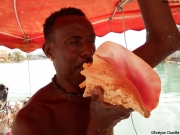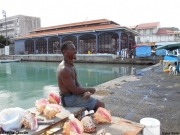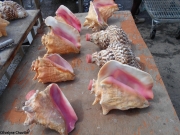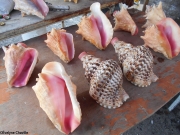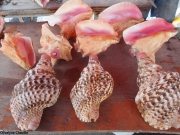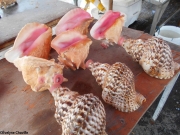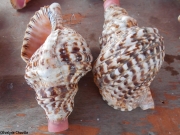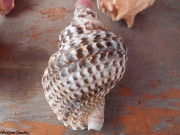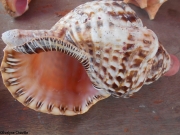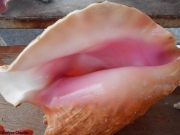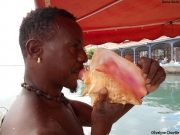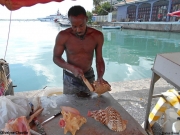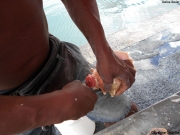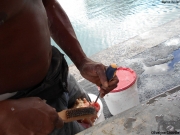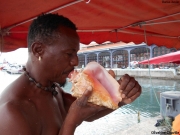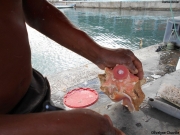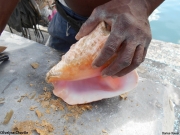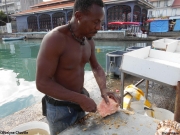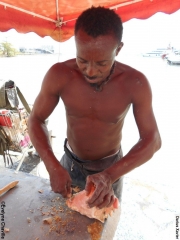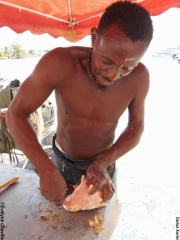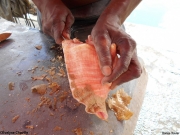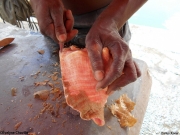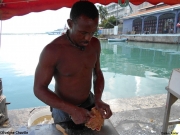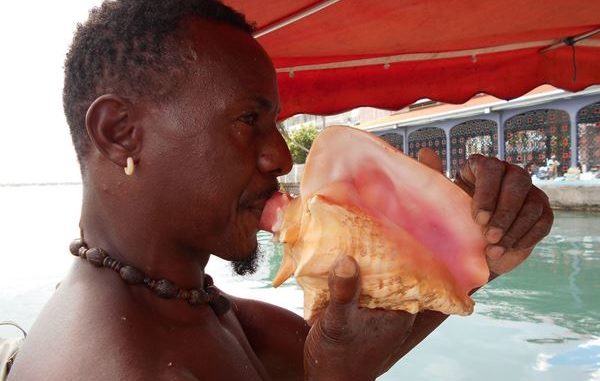
For years, the conch was used to decorate the graves of our deceased, among other things. It was forgotten for a long time but it is back in fashion thanks to carnival. In Guadeloupe, during this period, the conch becomes a must-have musical instrument. Formerly played by men, the conch is now very popular with women.
Darius Xavier is a witness to that evolution. Native of Dominica, ten years ago, he decided to make conch shell horns for a living. Today, he does not regret this choice. Tourists and local people make up his clientele.
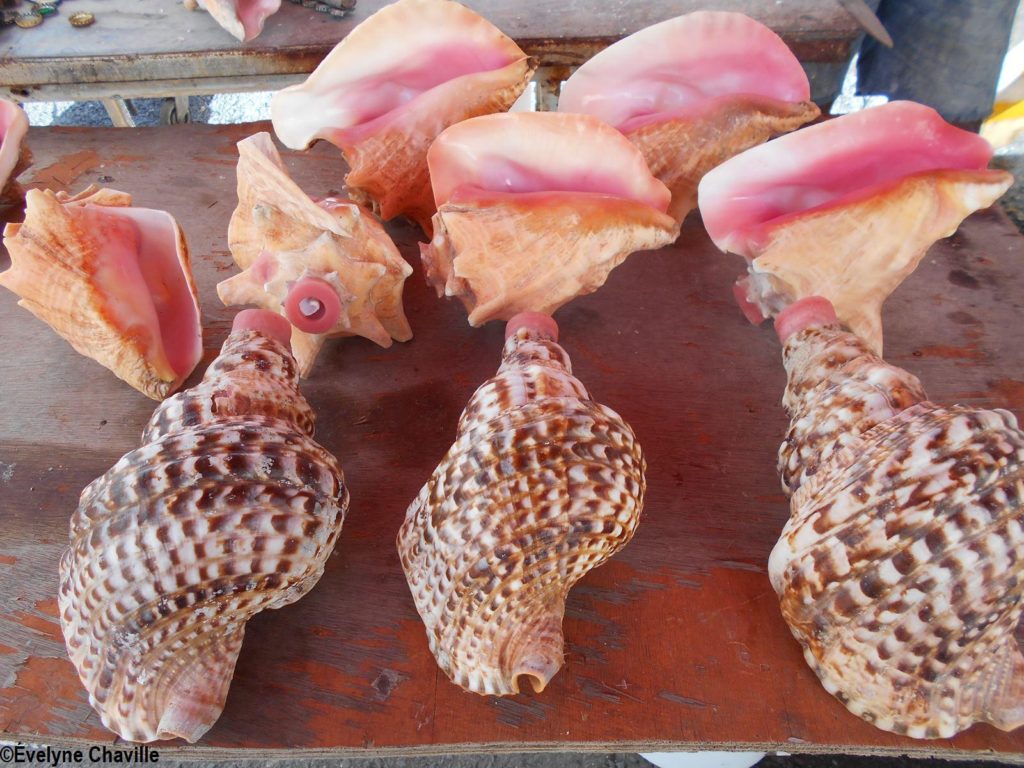
Who does not know Darius Xavier in Pointe-à-Pitre? Probably a very small number of people have not already seen him behind his stand in La Darse or have not heard from far away the sound of his conches. Darius has a rather rare craft profession: he is a conch shell horns maker. Every morning, from Monday to Saturday, he leaves his house in Sainte-Anne to settle down on the fish market next to the fishermen to make a living. “I started this job really by obligation. In fact, it was a policeman who passed by La Darse who asked me, one day, to make a conch shell horn for his son. The latter had seen carnival parades and he absolutely wanted to play this instrument. I made two, one for his son and the other one for me. Someone else also wanted a conch so I made a third for him then the number increased… But when I told my girlfriend that I was going to do this activity to earn my living, she answered that I was going to shame her and it was a job for a tramp”, says Darius in a perfect French with a slight English accent. The young man who comes from the village called Citronnier south of Roseau in Dominica and has been living in Guadeloupe for 14 years, did not listen to the negative comments and he persevered. Ten long years passed since this famous decision concerning his professional future but his start was not easy.
The conch fishery is reserved in Guadeloupe for fishermen and authorized between October 1 and January 31, so he began to store shells to have raw material throughout the year.
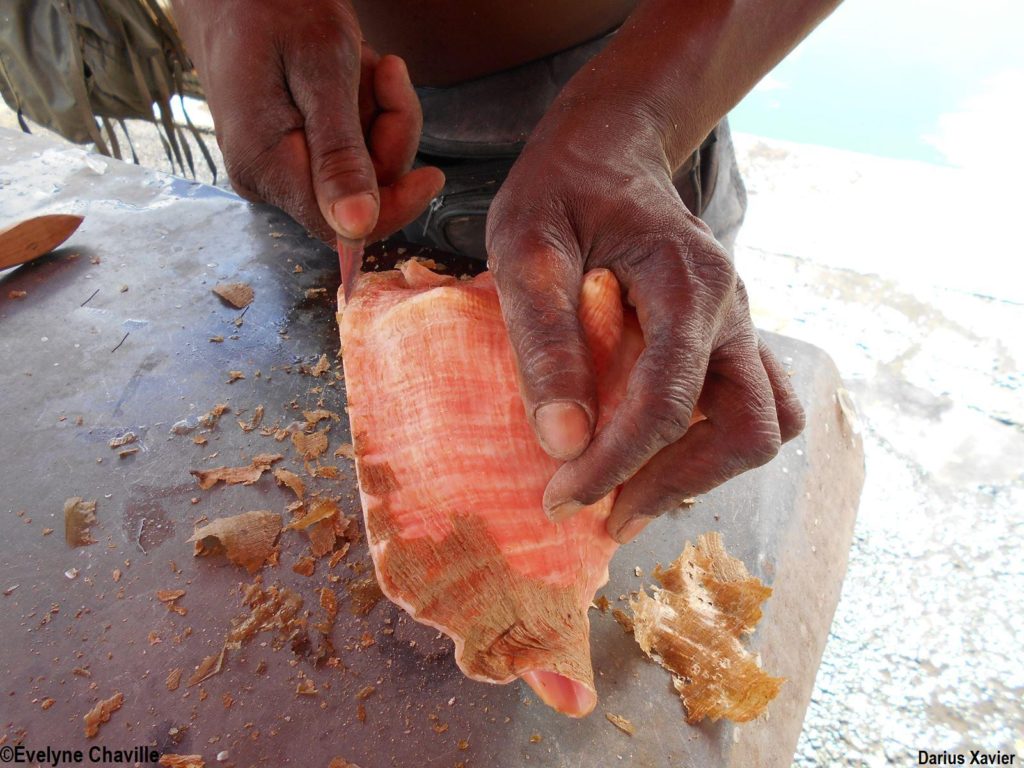
A production in several stages
Moreover, there was a lot of trial and error before he found the right tools to work. “When I started, I did not know how to cut perfectly the pointy end of the conch so I asked a guy to do it for me. I had to pay him 10,00 euros to cut 3 conches, but every time he only gave me two conches because he kept one. It was a negative story for me so I decided to do this myself: I tried with metal hacksaws but they often broke, I spent a lot of money. Finally I bought a grinding machine 200,00 euros”, Darius recalls. A sharp knife, a wire brush and a screw-driver are the other tools he uses most frequently. Then, he had to find the right material to make the mouthpiece, this essential part, because this is where the musician puts his lips to make the conch sound. “First, I tried putty then resin for boats later, someone recommended food resin”, he says. Darius is not stingy with explanations, he shows the different stages in the making of a conch shell horn, from the stripping to the installation of the mouthpiece. “After I put a product to strip the conch, I remove the skin, then with my wire brush, I rub it so that it shines (…) The mouthpiece has to be perfectly fixed, it must adhere well to the conch; it necessary to remove the resin residue because nothing must prevent air from passing into the conch. It also necessary to be careful with the spiral inside the conch”, he explains. Today, he can make a conch in one hour.
Darius is visited by many tourists who already know the conch shell horn or want to discover it. “Tourists buy conches but my clientele is predominantly Guadeloupean people. They buy because they enjoy local crafts, because they play conch shell horn or because they want to learn to play”, he says.
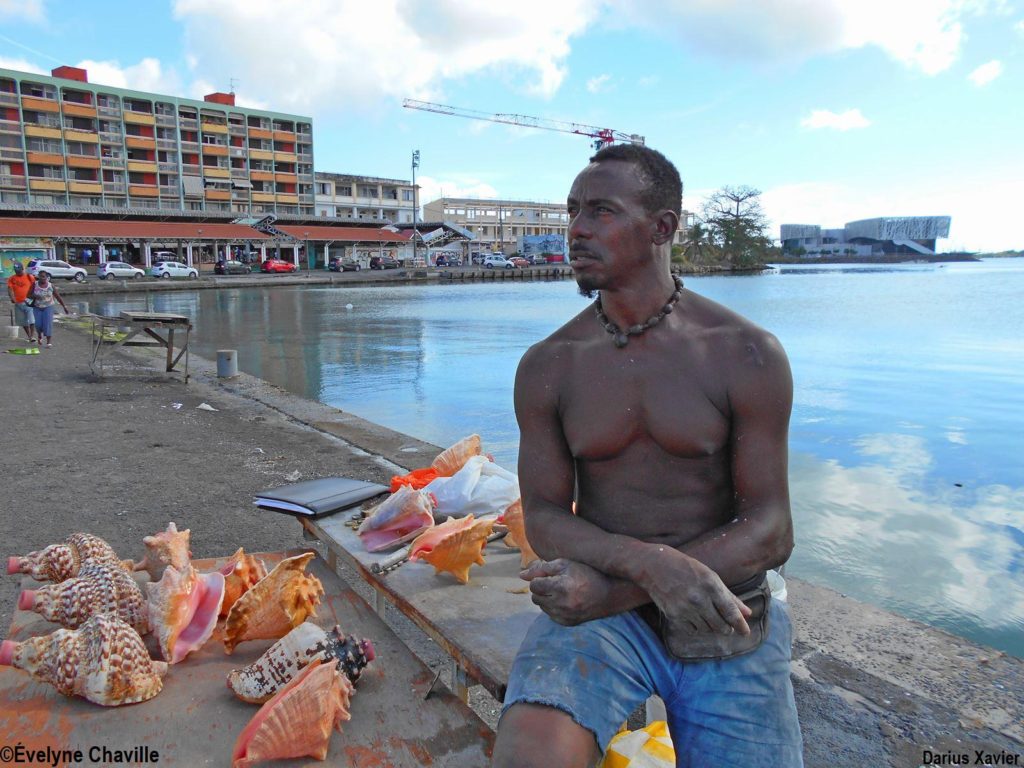
The conch, a real musical instrument
During this carnival period, local clients are numerous because the conch shell horn became an essential musical instrument for groups, especially “groups with skin”. In the past years, Darius who is also a conch shell horn player saw the evolution of this instrument that was before played mostly by men. “I was a member of the group “Mas a Wobè”. For four years, I’m in the group “Mas Ka Klé”. We are 22 in the conch section: 6 men and 16 women. Many women now play conch”, he says. However, Darius Xavier who has a good ear for music regrets that all the sounds of the conch shell horn are not always played. “I like music, I like listening to music, I tell my son to listen to music. We must consider the conch as a real musical instrument. We can do all the notes with it, the “do” seems to me more difficult to do (…) The conch in a carnival group brings color and heat.When the group members are tired, the sound of the conch gets them into shape”, he says. Moreover, there is a way to hold the conch so that the sound that it produces can propagate far away : “When you hold the conch, the “sail” must be directed towards the sky so that the sound travels very far. A good conch is a conch with a powerful sound. To make a conch, first you must choose it more carefully because there are “sick” conches which have holes. The professional must know how to identify these defects. Someone who knows nothing about conch will think that the sound is correct but I will see immediately there is a problem (…) I like my work and I never sell to the musicians bad conches”, explains Darius.
Over the years, Darius Xavier earned a good reputation, owning a conch made by him is a guarantee of quality. A conch costs 30.00 euros. He could have moved elsewhere, for example to a shop, but he prefers this location in La Darse with the Memorial ACTe in the background, where it all started.

